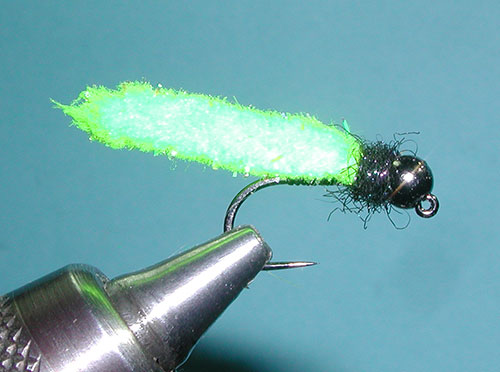

Mop Fly, Chartreuse Tying Instructions |
Materials: (To Order Materials, click the link)
|
|
Notes: The mop fly is a simple yet effective pattern imitating insect larvae or grubs. It came about from a group of competitive anglers out of North Carolina around 2011 using the microfiber appendages found on inexpensive mop heads or drying cloths. The pattern was introduced to the USA Fly Fishing team and was utilized by Lance Egan in winning the US National Championships. The Mop Fly wiggles when wet and is especially effective during high water conditions when natural grubs and inch worms are washed from the streambanks. The pattern can be used for trout, panfish, or bass. Use the pattern as a nymph with the tungsten beadhead getting the pattern to the bottom. The extended body should not exceed the shank length as the pattern is less than an inch in length. Make upstream casts, mending the line for a dragfree drift. As the fly comes closer to you, strip in the slack and raise the rod tip when the strike takes place. The fly creates plenty of action, so refrain from trying to create action as the pattern works better as a dead drift under an indicator. The Mop Dragon is a great choice for panfish like crappie, sunfish, or bass. The CDC Mop Fly will provide a very natural imitation and can be tied in a number of colorations such as yellow, cream, and pink.
|
||
|